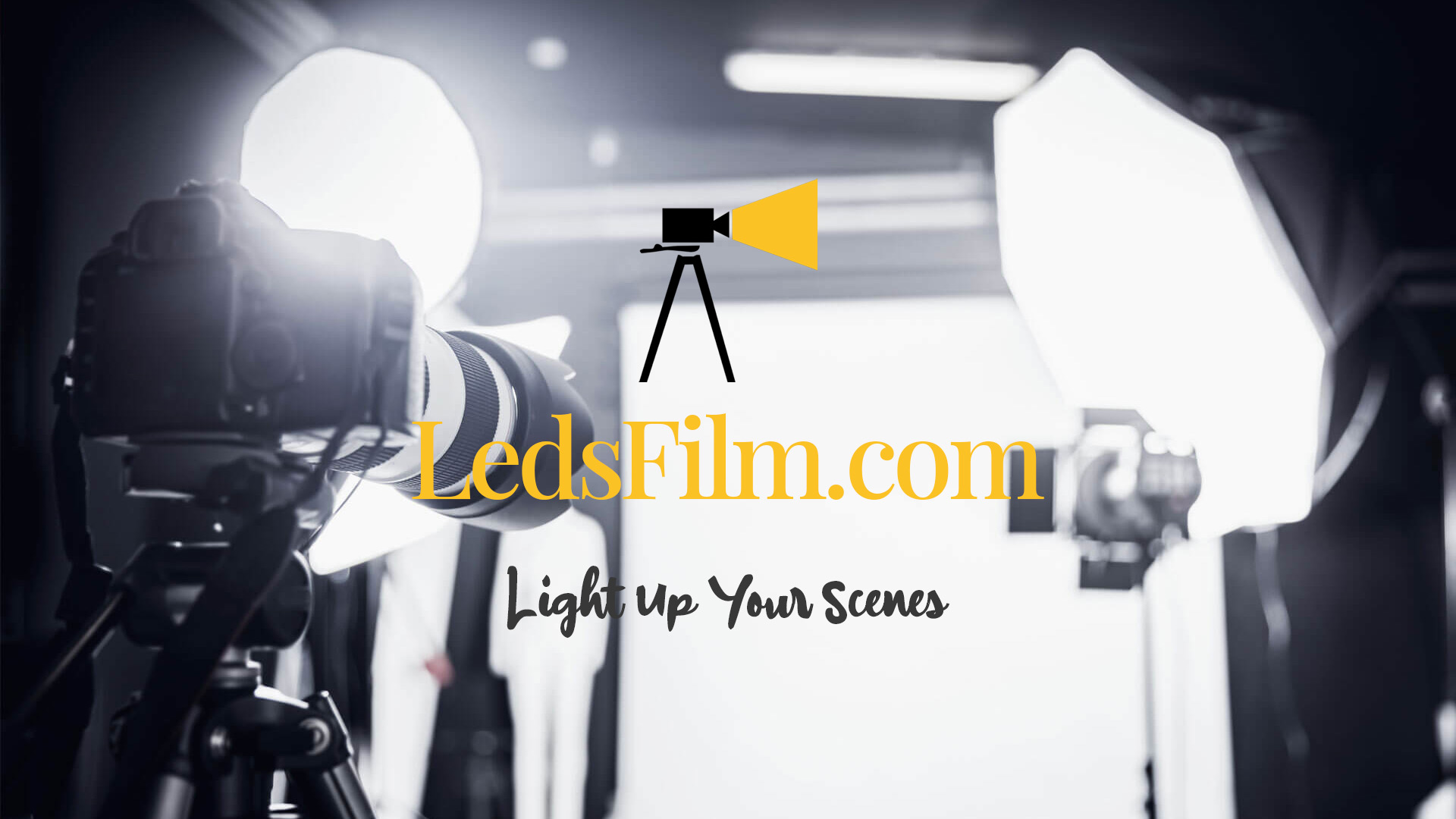
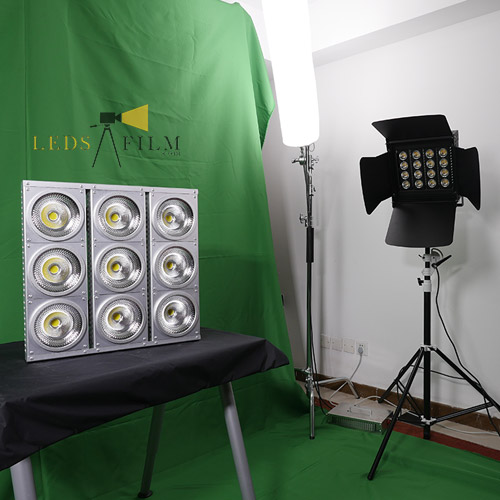 Taking into account the growing demand for professional studio lighting, whether for YouYuber, microfilm, commercial or Oscar production, the best lighting is an indispensable equipment for photographers and directors. If the flash light, soft-box and hard light cannot create a good effect, your movie & photography shooting work will be less effective, here, you can find a variety of studio lights, as well as some of the skills to use them indoors and outdoors.
Taking into account the growing demand for professional studio lighting, whether for YouYuber, microfilm, commercial or Oscar production, the best lighting is an indispensable equipment for photographers and directors. If the flash light, soft-box and hard light cannot create a good effect, your movie & photography shooting work will be less effective, here, you can find a variety of studio lights, as well as some of the skills to use them indoors and outdoors.
We are a company that produces different photography lights. The main products include LED video lights, soft lights for shooting, home or commercial portrait lights, stage lights, color-changing lights and high power floodlights. Comparing with tungsten and fluorescent lamps, doing LED replacement is a more energy-saving and durable choice.
Welcome to our one-stop video lighting equipment & information website. Whether you are an amateur YouTuber or a professional, lighting technician, or other users and buyers, you can find almost all film lighting guide and reviews.
What studio lights are we offering?
LedsFilm is a revolutionary manufacturer of LED lighting for film, television broadcast (tv), video and digital imaging production. We also have high-end solutions for stage environments and studio, with some of our video production lights. Among our high power studio lighting equipment for video and film production, there are several highlights such as the 1000 watt and 2000w film light (both as diffused versions and as hard light).
Our high power led lights for photography have CRI 95+, with green spike-free spectrum (our R9 is very suitable for cameras) and 150 lumen/Watt. These product photography lighting also include dimming function (from 0 to 100%), DMX In and Out, and continuously changeable color temperatures from 2,700K and 7,500K. The LED lights for video production can be used for extreme high speed photography, as they have been tested at 5000 framesecond. Fixtures have a battery adaptor that allows them to connect to 24v and 48v.
Our fixtures reproduce an amazing lighting contrast, generating a better balance for image representation. The contrast sensitivity and luminance level are optimized for camera (such as our 500 watt, 2000 watt and 1000w film light). By employing our photography lighting equipment and video production lighting kit, your company will be able to recreate much brighter cinema sets, while lowering the electrical costs by 70%, without the need of resorting to rented generators.
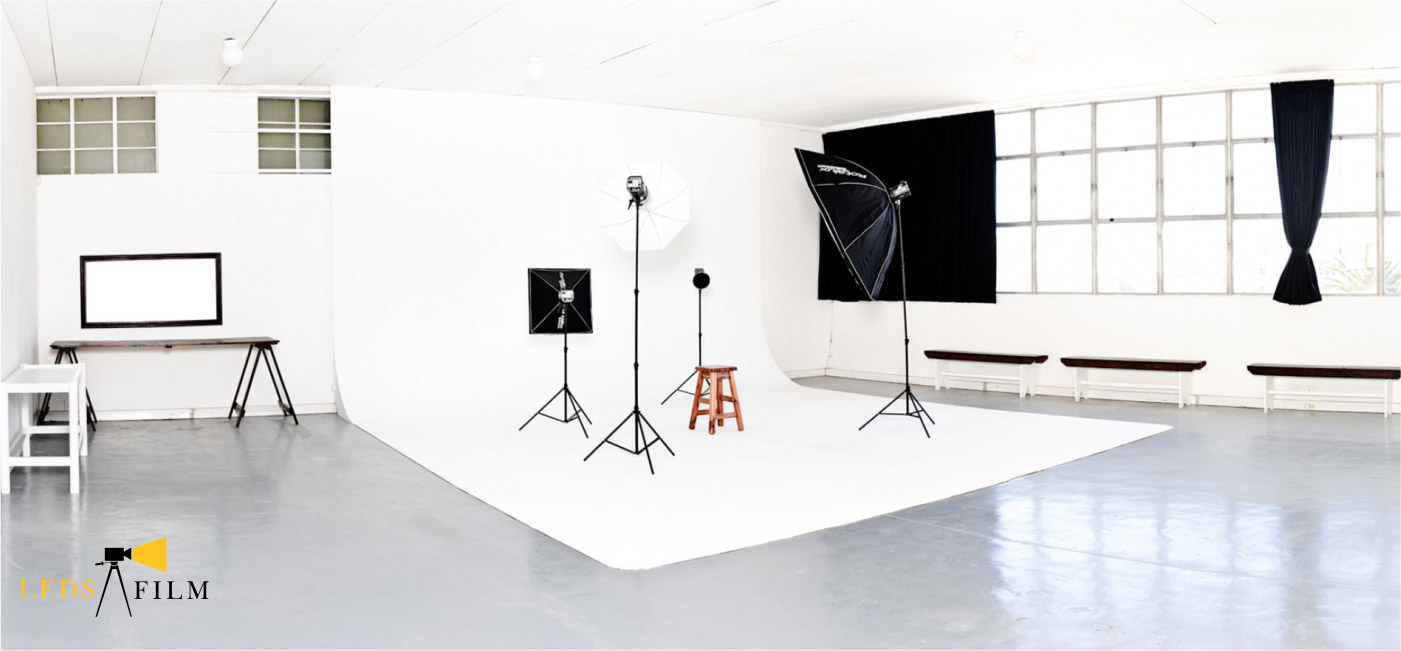
Our Products
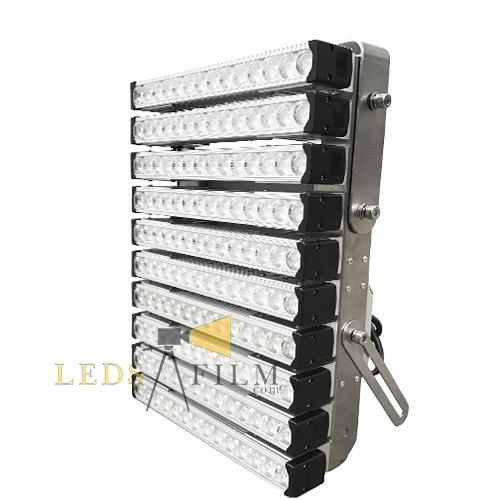 LedsFilm currently has the smallest-size and brightest film light in the world. We focus on high-power solutions that will help you save about 70% in energy expenses, while improving your quality light output.
LedsFilm currently has the smallest-size and brightest film light in the world. We focus on high-power solutions that will help you save about 70% in energy expenses, while improving your quality light output.
Our Projects
Our products have been recognized by directors of photography and cinematographers worldwide, receiving excellent reviews and acclaim for their revolutionary features. Currently, our presence extends to noteworthy markets, which include Hollywood and Indian cinema studios.
Our innovations
We develop our own technology and invest heavily in our R&D team, constantly improving, designing, re-inventing and expanding on new concepts and LED filming light models. R&D is the pillar of our efforts and innovation is our driving force.
Hard Lights for Photography
What is a hard light? First of all, we can briefly look at the following two commonly used continuous video lighting: Hard light and soft light are so-called hard, which means that the shadows produced by light are clear and dense, with sharp outlines and high contrast; the so-called soft refers to the soft and unclear shadows produced by light, and the gradient is gradual and the contrast is low. Hard light with a clear directionality, it can make the subject produce a sharp contrast between light and dark, contribute to the performance of the texture. Hard light tends to give people a sense of fortitude and a sense of vitality. Soft light has no obvious directionality. It is suitable for reflecting the shape and color of an object, but it is not good at expressing the texture of an object. Soft light tends to give people a soft and delicate feeling. Soft light in photography is generally referred to as indirect light, such as the cloudy sky; hard light is direct light, such as the scene in the sun can also be distinguished from the performance effect: soft light does not cause a clear shadow, hard light has obvious shadow.
Why do you need a hard light?
Projections can be formed under hard light, which not only increase the depth of perspective of the screen, but also form a rhythm with the light and dark space of the bright part, increasing the atmosphere of the screen and the appeal of the beauty. Therefore, the LED hard light source is suitable for the character’s personality, the specific theme, and the atmosphere of creating a picture. The role of the hard light source is to add a bright color to the portrait photos, an impact, highlighting the form of the subject and enhance the three-dimensional. In the studio, this kind of light is usually a small area of unscattered strong light. It can give people often a feeling of dynamism and vitality, and it has obvious directionality that will cause the subject to produce light. Bright contrast between light and dark helps textures. Hard light is often used to highlight key features of hair, body contours, and the environment. Here we introduce the use of several hard light with other light sources.
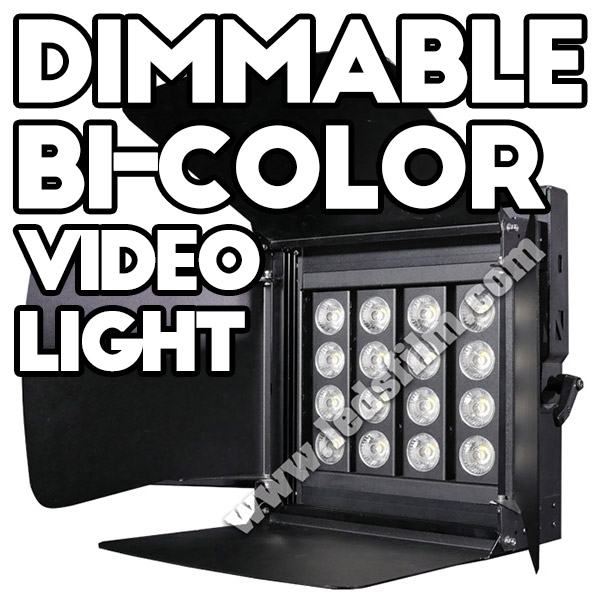
Types of Hard Light
A. Indoor hard light
First of all, let’s take a look at the most commonly used hard light source in the studio, the floodlight. The light emitted by it is a direct hard light. The brightness of the light is high, the directionality is strong, the contrast is large, and the resulting projection is heavy. In addition, the light in the center of the light domain is high, and the edges are significantly attenuated, so the distance between the lights and the characters is particularly important.
i) Hard light, umbrella light & soft light
The umbrellas of different textures and specifications are installed on the floodlights to become umbrella lights. Umbrella lights are characterized by a large area of light, soft light and weak contrast. The addition of a diffuser to a variety of flash lamp heads creates a soft light. The light emitted by the soft light is formed by the direct light emitted from the flash and the reflected light from the reflector, and then diffused and diffused by the diffuser. The characteristics of soft lights are to provide average and sufficient lighting, light and soft light, but the direction is generally stronger than the umbrella light, the contrast is clear, the projection is thicker than the umbrella light, and has a good level of performance. Sometimes in order to increase the color atmosphere of the picture, adding a full color paper in the diffuser will make the transition of the color light effect better.
The combination of the above two kinds of light sources and hard light sources can make up for each other’s deficiencies and add more atmosphere to the screen. Normally, we first use an umbrella light source and a soft light source to illuminate the faces of people and illuminate the background at the same time. The purpose is to make the character’s skin look more delicate and make the whole picture have a balanced brightness, its light position can not move. Adding a hard light source to a person can increase the three-dimensional aspect of the picture and improve the sharpness. However, such an emphasis light cannot be fixed at an angle. Therefore, according to the effect sought by the photographer, the basic light rule and the person’s steering can be changed accordingly. Its intensity can exceed the first level aperture of soft light and umbrella light. Because of the difference in light quality, even if the intensity of the hard light source is the same as soft light and umbrella light, it will also produce a quite vivid effect.
In fact, photography lighting is very important to a appropriate representation of feelings. It is because under same subjects, the meanings of the photo will be completely different. For instant, the projection angle and color temperature of sun light varies throughout daytime. The shadow, color and brightness will contribute to the content of the photos. If you are making the professional movies, keeping a consistent lighting color temperature on people or object would be an essential task. In general, without light, we can do nothing. Mastering the studio lights would make your photography becomes more impressive to audiences.
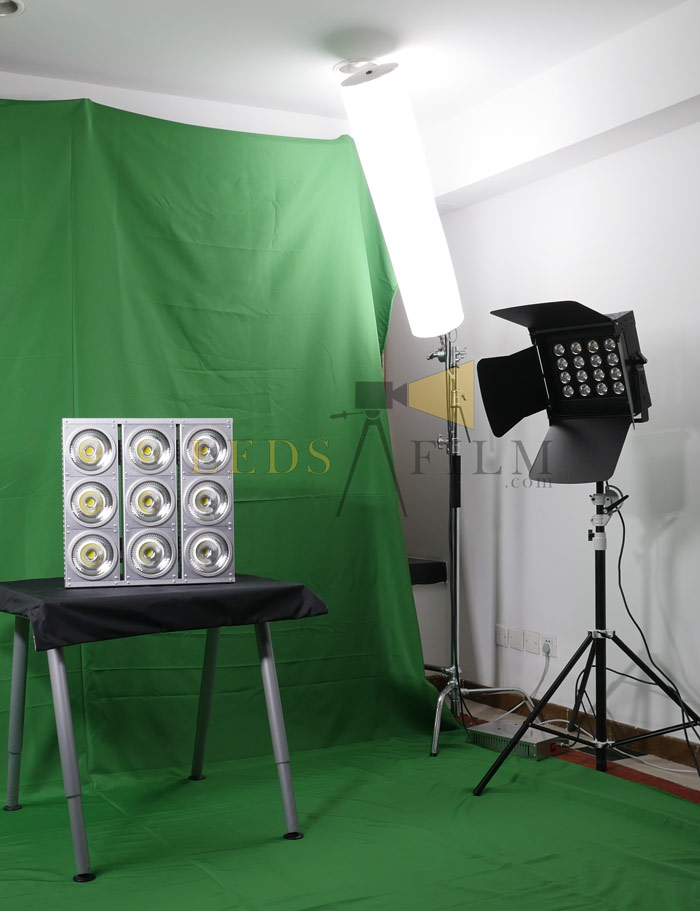
▲ Application of hard lights inside indoor studio.
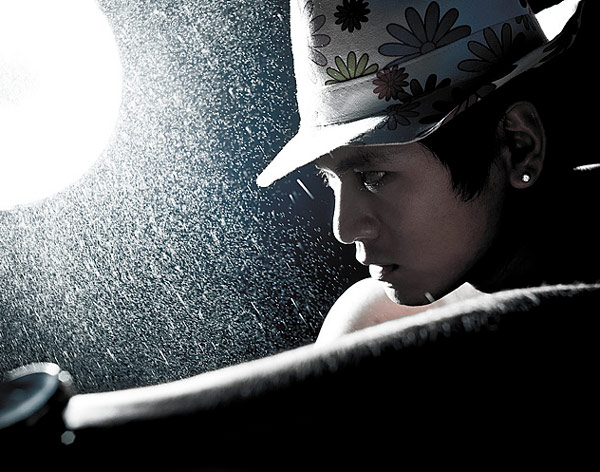
▲ Hard light source can increase the three-dimensional picture and improve the definition.
ii) Hard light with colored light
Chromatic light refers to the addition of color patches on various flash lamp heads to change the color of the light, thereby creating an atmosphere. Color chips can be produced in unequal sizes, either in front of a hard light source or outside the diffuser.
iii) Colored light source with continuous hard light source
Continuous light sources refer to artificial light source bodies that emit light for a long time. Usually, the artificial light source bodies have many kinds of color temperatures. Among them, a lower color temperature makes a person’s skin look healthy, but usually the color temperature of the lamp is slightly lower. At 3200K, if using the flash white balance mode will cause the screen to have a serious cast color, it is recommended to use the incandescent white balance mode will achieve a good shooting effect, such as the picture is a tone will appear monotonous atmosphere, so with instant light Add color films to create atmosphere for better results.
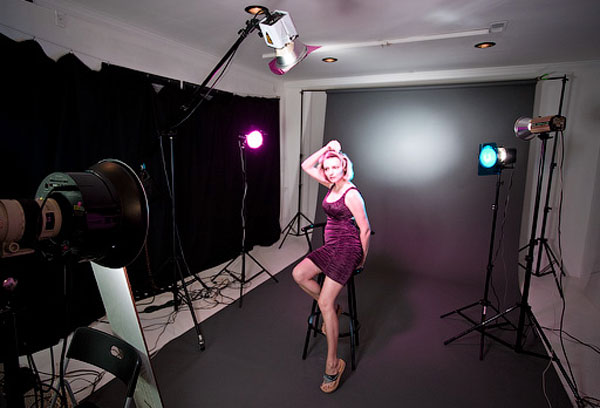
▲ Use RGB color-changing hard light to create unique atmosphere.
B. Outdoor hard lights
Outdoor photographs, usually used hard light source with direct
sunlight or artificial flash light source. Of course, sunlight is
constrained by time, climate, and direction, and artificial light
sources can make up for its deficiencies. It is worth noting that light
does not have to be dimmed to use the flash. The advantage of using a
flash is to match the natural light.
i) Direct sunlight with ambient light
Direct sunlight is usually our most common kind of hard light source. Its advantage is that the luminous intensity is high. If we use it properly, it will make the picture appear rich in levels and make the figure produce a clear outline. However, the brightness of the ambient light is much lower than that of the direct sunlight, so not all time periods are suitable for shooting, and it is usually necessary to avoid the sunlight at noon.
ii) Direct sunlight with artificial light
Direct sunlight is a hard light source. The main purpose of using man-made equipment is to make up for the dark side of the sun. Usually we use a reflective plate to fill the light. However, for direct sunlight, the use of flexible reflectors does not achieve good results (such as foam boards, KT boards, etc.), so hard-reflective boards (such as tin boards, mirrors, steel plates, etc.) should be selected. Shooting the flash is a better choice for us. It can be used in combination with the sun and it will have more variability. It can be used as the main light to illuminate people, and it can also be used as a contour light to highlight the three-dimensional effect.
iii) Scattered light with artificial hard light
There is less contrast in shooting pictures in overcast, so using hard light can improve the three-dimensionality of the picture. In cloudy photography, we should determine the exact amount of exposure, but we can also try to expose it slightly, because the normal exposure is not as good as the exposure is slightly less. Exposure minus 0.5-1 will not affect the performance of the bright and light parts of objects illuminated by cloudy light, but will help increase darkness and darkness in the tone, and increase the contrast of the entire screen. . At this time the intensity of the external light can exceed the environment, the ratio is usually 1:2, due to the low brightness of the entire environment, after adding the external light is easy to control the tone of the relationship between the characters and the environment, if you use a larger light ratio, even It’s easy to shoot the night into the night.
iv) Night environment with artificial continuous hard light
The nighttime lighting environment is very complex and all possible ambient light sources should be used to match the shooting needs. Even so, the nighttime ambient light is not enough to illuminate the character, so to join the artificial continuous hard light source, you can usually use the high-brightness handheld flashlight. Of course, it is most convenient to choose an external photo flash with both the flash function and the continuous light source. Spotlights can also be used if the site conditions are good.
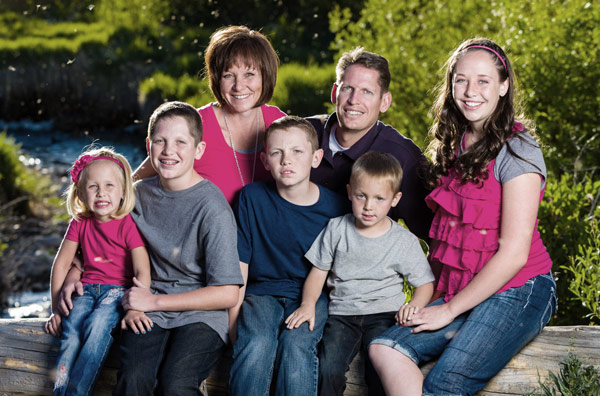
▲ Clear outline can be produced under direct sunlight.
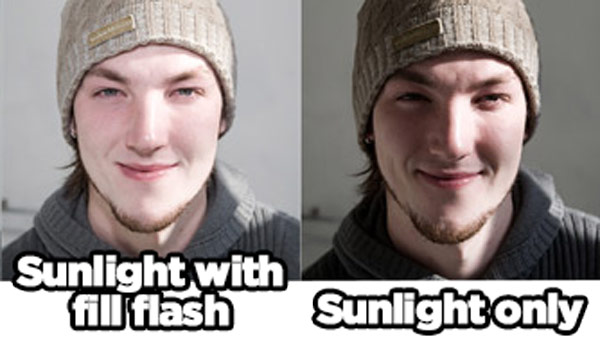
▲ Effects on portrait under sunlight and fill flash (left), sunlight only (right).
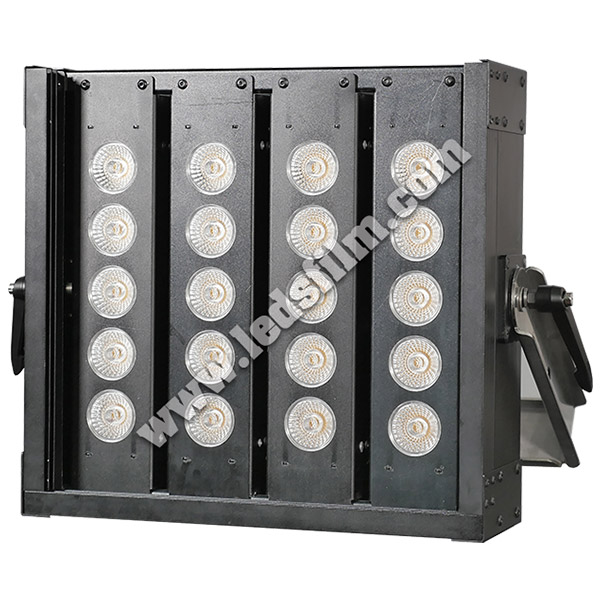
Soft Lights for Studio
What is the meaning of soft lights? It refers to a light that is “soft” and has no obvious shadow, and is suitable for reflecting the shape and color of objects and giving people a sense of lightness and delicateness. The light from the flash can be softened to make the picture look more natural.
The so-called soft light and hard light are actually the light quality in the photographic light, referring to the hard and soft characteristics. Direct light with strong targeted illumination is generally called hard light, and after being blocked or reflected, it is called soft light on the subject. For instance, the hard light passing through a diffuse will “soften” the lights.
Characteristics & guideline of using soft lights
i) Illumination distance
The soft light has a short illumination distance, generally between 2 meters and 3.5 meters, which is unfavorable for shooting in large scenes. To light up a more distal region, you can select the customized LED soft light having high power from 1000 to 10000 Watt. The high power studio lights using LED as the light source is suitable for outdoor film shooting. Bright illumination is paramount in large and dark areas. One of the important tips is that using LED can save about 70% energy comparing to tungsten or halogen lamps, which is able to give longer using time for the same external power source or battery.
ii) Modeling of lighting distance
Soft lights as the basic lighting, because of the distance between the lamp and the object is different from the amount of light received, so the size of the tone will be different. For example, in the broadcast of news programs, you can set the distance between the main light and the back light and the subject is at 2.5 meters, and the distance between the auxiliary light and the subject is set at 3 to 4 meters, so as to make the character become more prominent.
Extended reading: A guide to use studio lights
iii) No specific classification on main or supplementary lights
Soft light is often not sorted as the main light or auxiliary light. It is because the illumination is too uniform. The objects become illuminated will be lack of texture, and hence the shape is not vivid & clear enough. Overusing soft panel lights inside studio lead to too rigid & weary photography.
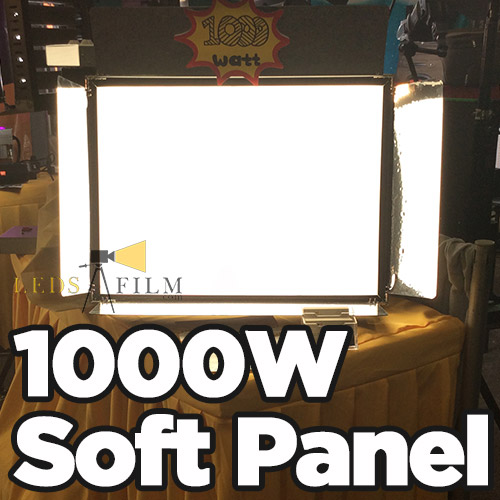
▲ LED Soft Lights (1000W High Power)
iv) Stable color temperature
Soft light its nature is relatively stable, its beam in full compliance with the color temperature requirements of the camera. Its color temperature does not change with the brightness, so the color temperature of the picture is stable, clear details, vivid colors. The brightness and color temperature varies throughout day time, LED video lights having bi-color function does a great help in maintaining a stable color temperature of illumination for portrait photography & filming.
v) Mixing color temperature
Soft light as the basic lighting, in addition to the 800w/1000W red head spotlight for the backlight and the main light of the supplementary lighting, which can complement each other to make up for the better results
vi) Effects on portrait lighting
Soft light makes the character’s face become more delicate, and let others feel very comfortable. The pictures taken also have a more natural in real life. Imagine in a cloudy day, the light is diffused and not very intense, which is more desirable if you want to make a microfilm.
vii) Number of soft light used
Sometimes it is the simplest and handy way to have a single LED soft light. You can choose to place it on the left or right side of the character. The soft lights should be placed a little higher than the model, and they should be dropped from the upper 45 to 60 degrees to reduce glare.
viii) Highlight
If you think that only one soft light is too dark, you can put a reflector on the opposite side of the main light. Refraction of part of the light makes it possible to take a sharper picture of the detail and highlight the entire subject. It is a relative time and money saving if you have a tight budget on filming project.
ix) Shadow modeling
We can achieve shadow modeling by making use of soft studio lights having various size and brightness. That is, soft lights are used as basic lighting, and setting up the numerous 40 watt to 100 watt studio lamps as the main light and back light. For the auxiliary light and modified light, we can use the LED lights having smaller power from 20 to 40 watt. It should be noticed that the distance between the background film and the subject should be carefully adjusted to get the proper results.
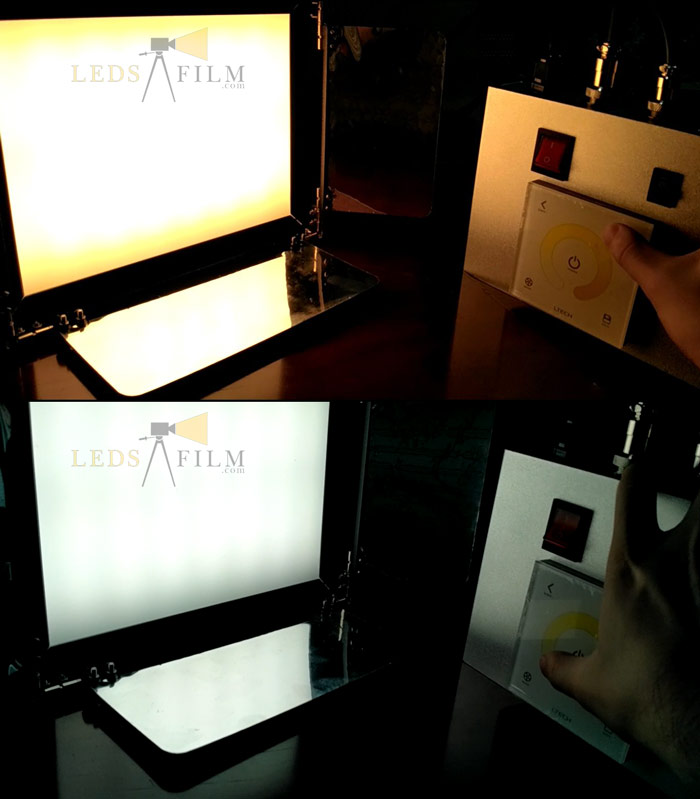
▲LED soft panel lights having bi-color function help maintain a constant color temperature throughout the day of shooting.
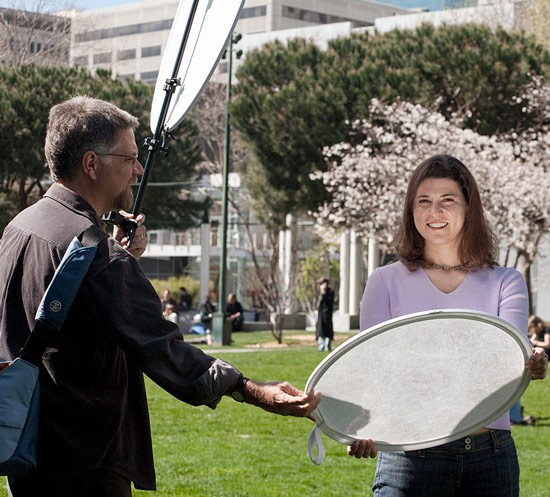
▲ Reflector maximizes the lights illuminating on subject and thus acts as a highlight.